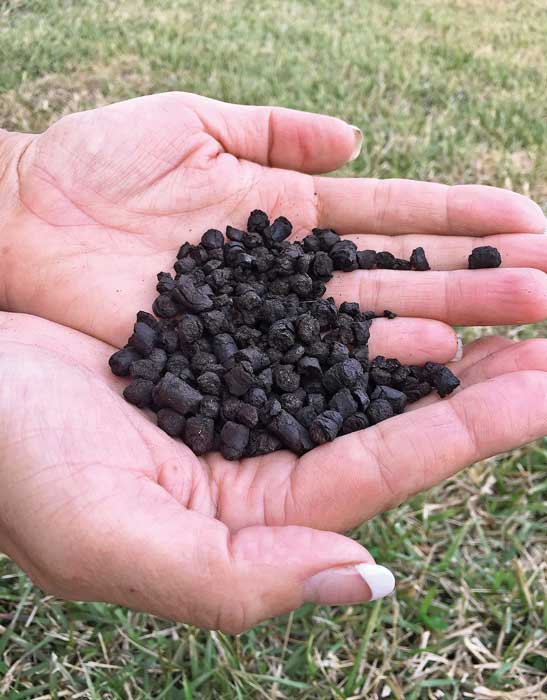Finding New Uses for Food Waste
IFTNEXT
Food processing and the preservation of food feed the planet. But converting crops, animals, eggs, milk, and plants into food and beverages also creates vast amounts of waste. To solve this problem, researchers are examining the by-products of food manufacturing and looking for ways to utilize and transform the waste into beneficial products with commercial value. Here are some recent discoveries in the quest to turn what was once trash into treasure, so to speak.
Antioxidants From Pomace
Waste from wine making can have a second life as a shelf-life–extending ingredient in fatty foods, researchers at the University of Nebraska-Lincoln (UNL) have shown. The pulpy residue, which is known as pomace, can contribute to pollution when the pesticides and fertilizers used on wine grapes leach into soil and water, explains researcher Changmou Xu, an assistant professor at UNL’s Food Processing Center. So finding a commercial use for pomace is doubly beneficial: it has the potential to provide an economic as well as an environmental benefit.
Xu’s team used phenolic compounds separated from the other components of pomace as a substitute for artificial antioxidants like commonly used ethylenediaminetetraacetic acid (EDTA), an approach the researchers think has potential because of its clean label benefit. They found that the compounds were able to inhibit lipid oxidation in mayonnaise by about 30%–40%, thus extending shelf life. This was less effective than the EDTA, which inhibits lipid oxidation by about 80%–90%, so Xu’s team is working now to try to improve the phenolic compounds’ performance to bring it up to a level comparable to EDTA.
Xu says his research team, which is collaborating with a major food company, is exploring applications of phenolic compounds from a variety of plant sources, including grape waste and hops, with a goal of commercializing them as added-value food ingredients.
Bio-oil From Acid Whey
Scientists have used microbiota similar to those found in the human gut to convert “acid whey” wastewater from dairy processing into a new bio-oil with an application as an animal feed.
The scientists’ work was published in an article in the scientific journal Joule. In the study, the researchers explain that makers of Greek yogurt produce large volumes of acid whey, which has been successfully converted into methane gas by using anaerobic digesters. But they point out that revenue from methane is relatively low.
Their work involved converting acid whey into valuable medium-chain carboxylic acids (MCCAs), which can be used in livestock feed additives or as precursors for biofuels. Their approach is significant because it relies on microbiome cultures and requires no additional chemicals.
Researcher Lars Angenent, a professor of environmental biotechnology at the University of Tübingen in Tübingen, Germany, explains that the process involved use of a tank called a reactor microbiome that included many different types of bacteria. “This microbiome is an open culture, which means bacteria from the outside environment can also enter and grow, similar to our gut microbiome,” he says.
 Biochar From Crop Waste
Biochar From Crop Waste
Sugarcane, sugar beets, and sorghum are important global crops that are used to make sugar, syrup, and other sweeteners. However, when harvested and used to produce sweeteners, these crops generate a significant volume of waste. Scientists are developing technologies to turn that waste into beneficial materials.
“In Louisiana, four million tons of sugarcane bagasse are generated each year and approximately six tons of trashy residue are produced for each acre of sugarcane,” says Isabel Lima, a research chemist with the U.S. Dept. of Agriculture’s Agricultural Research Service in Louisiana (USDA-ARS). “Sweet sorghum is used to produce syrup, and the process also generates bagasse and leafy trash residue.”
Globally, most of the plant waste generated from sugarcane, sorghum, and sugar beets is burned in the field because it is too costly to collect and properly dispose. But in Louisiana, Lima and other USDA-ARS research scientists are developing technologies that can convert crop waste into a viable bioproduct with multiple uses: biochar. “Biochar is a charcoal-like material produced from multiple sources of organic-type biomass, and it is produced by thermochemical conversion of biomass,” Lima says. “[It] can be used as a soil amendment [or] fertilizer, remediation (cleanup), and … [adsorption] of either water, gases or soil.”
IFTNEXT is made possible through the generous support of Ingredion, IFT’s Platinum Sponsor.
